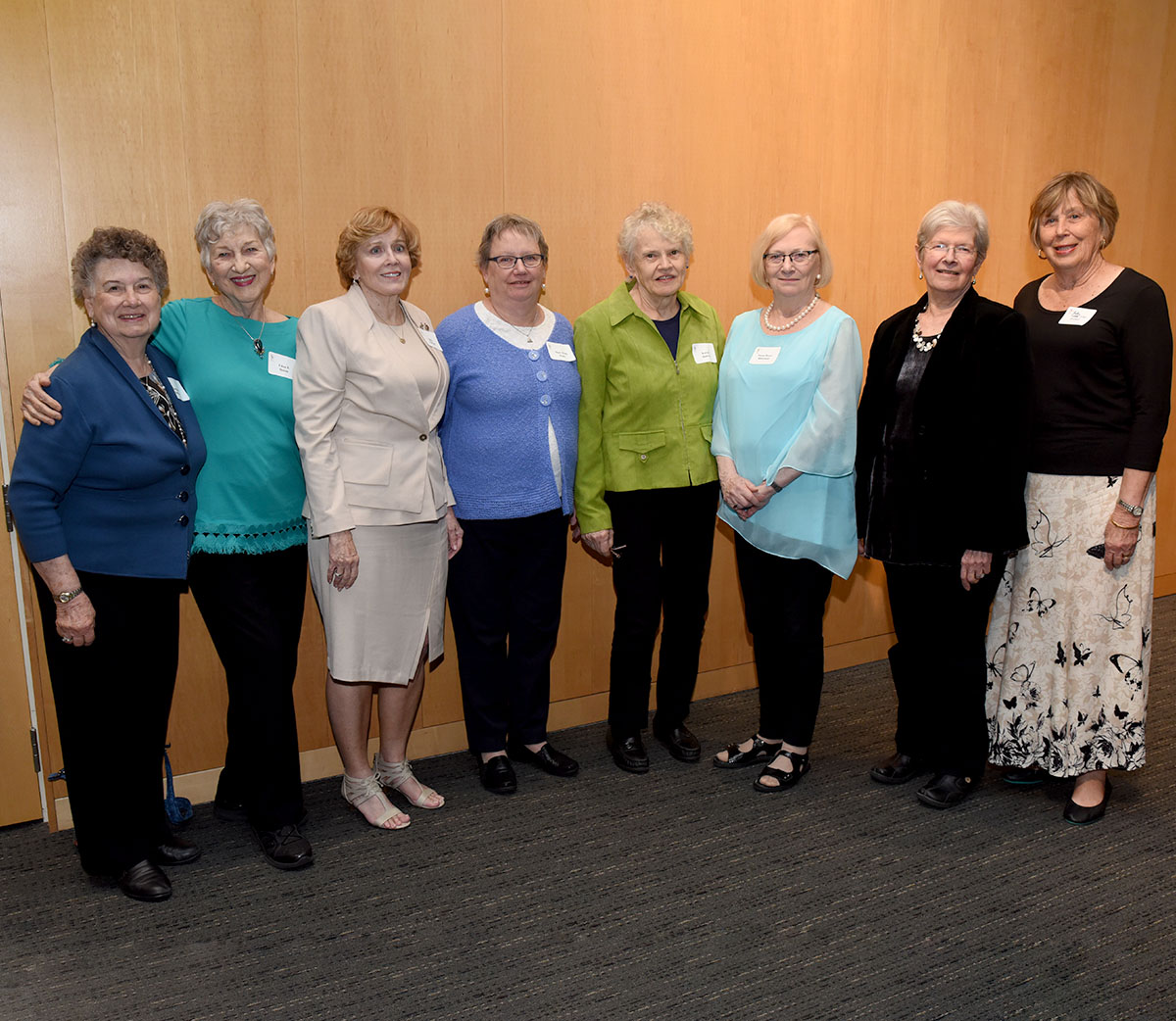SU Celebrates 40 Years of Nursing Education
 SALISBURY, MD---The first bachelor’s degrees were awarded to nursing majors at then Salisbury State College in 1979. Since then, the campus has produced some 3,000 nursing graduates who work all over the nation.
SALISBURY, MD---The first bachelor’s degrees were awarded to nursing majors at then Salisbury State College in 1979. Since then, the campus has produced some 3,000 nursing graduates who work all over the nation.
Salisbury University recently celebrated 40 years of nursing education with faculty, staff, students, graduates, community partners and others. Among the attendees were a few founding faculty members: Karen Badros, Mary Kane, Barbara Kellam and Edna Quinn. Many other professors and administrators also were credited with providing extensive support over the years.
“Our nursing programs are known for high-quality outcomes,” said Dr. Jeffrey Willey, director of SU’s School of Nursing. “Our pass rate on the licensure examination for registered nurses is consistently high (98 percent this year), and we have the highest 10-year average of all University of System of Maryland campuses. Our pass rate on the family nurse practitioner certification exam is 100 percent, with many graduates staying in the region to provide health care to local citizens.”
SU’s nursing offerings have expanded dramatically over four decades. A master’s degree for rural nursing started in 1982 and later was named a Maryland Higher Education Commission distinguished program. An accelerated option for career changers earning second bachelor’s degrees started in 1989 and remains a highly-popular option.
In 2012, the Doctor of Nursing Practice (D.N.P.) was launched as the University’s first doctoral degree, with nine initial students graduating in 2015. Recently, SU began awarding official B.S.N. and M.S.N. degrees (instead of the B.S. or M.S. for nursing). SU nursing faculty are highly qualified, as all 23 have or will soon finish their doctorates.
Methods of teaching nursing students also have changed with new technologies, said Dr. Lisa Seldomridge, longtime nursing faculty and director of SU’s Richard A. Henson Medical Simulation Center, which opened in 2011.
“Today our students engage in realistic clinical scenarios with high fidelity human patient simulators that respond as humans would,” she said. “There are also learning opportunities for neighboring colleges and practicing health professionals.”
Having the Simulation Center and expanding from a department to a school in SU’s new College of Health and Human Services also provide excellent opportunities for nursing students to work side-by-side with peers across disciplines, as they will in the real world. Seldomridge expects more interprofessional collaborations in the future.
In addition, she said SU is known for such innovations as its Eastern Shore Faculty Academy and Mentorship Initiative, a collaboration with area community colleges that helps clinical nurses become part-time faculty. To date, it has produced over 100 graduates to help meet nurse faculty shortages, and is expanding with partner campuses in central and western Maryland to provide statewide solutions.
“Our future is bright with myriad opportunities,” Seldomridge said. “We have classes that are delivered in person and online using a variety of software, so graduate students can study from hundreds of miles away. We hope to increase enrollments in our M.S.N. and D.N.P. programs to meet the need for educators, nurse practitioners and leaders. In addition, expanding our traditional and R.N. to B.S.N. programs will help with national goals to prepare more of the nursing workforce with bachelor’s degrees.”
Dr. Jordan Braniff, a two-time graduate of the second-degree bachelor’s and D.N.P. programs said it was no problem getting a job with his SU nursing degrees. He was an emergency room nurse before becoming a family nurse practitioner in the region.
“I wouldn’t be where I am today without SU,” he said, adding that it gave him a great basis of knowledge and skills. “Achieving my doctoral education was something I never thought I’d do, but I did because of the mentorship and experience at SU.”
For more information, visit the SU School of Nursing website.
